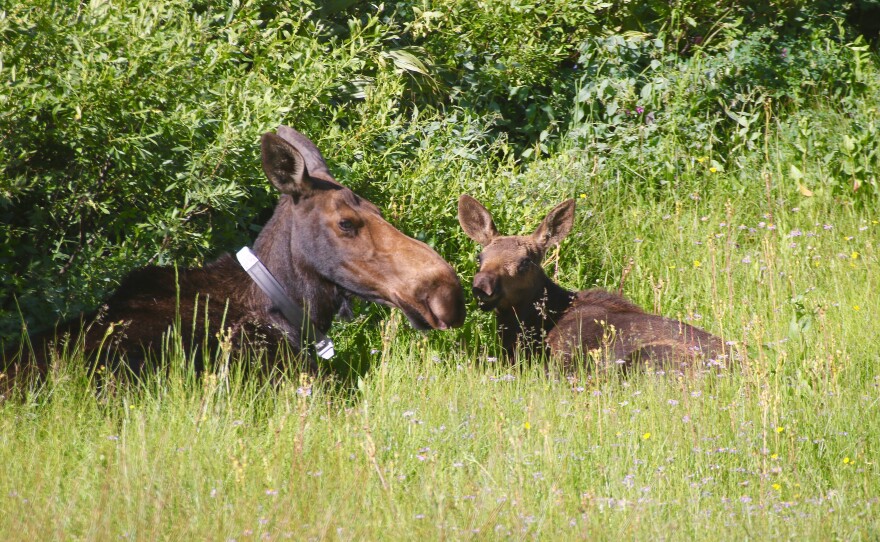In the early 1900s, moose began expanding south into Utah from Wyoming.
This moose sub-species was named in honor of [Congressman] George Shiras III who explored Yellowstone in the early 1900’s and found large numbers of moose.
The Shiras (Shy-ras) moose is the smallest sub-species and occupies the southern-most moose habitat. Specific to the southern Rocky Mountains, the population extends from the bottom of British Columbia, Canada to Colorado.
For the past 100 years, Utah’s Shiras moose population has fluctuated, peaking at 3,500 in 2005. The number has now stabilized at about 2,700.
Dan MacNulty, associate professor in the Department of Wildland Resources in the Quinney College of Natural Resource at USU, and his research team, joined with the Utah Division of Wildlife Resources (DWR) to identify what threatens Utah’s moose population, and then work together to ensure the herds remain stable.
The condition of a moose herd is highly dependent on the health of its adult females, hence, this has been the focus of their research.
In May or June, the females begin having their calves. The calves remain with their mothers for a full year. If the mother is expecting, she’ll chase the yearling off before the new calf arrives.
Once the yearling has left, the mother begins searching for secluded thicket to have her calf. Usually the thicket is so dense, a hiker walking by would never know the mother and calf are nearby.
The female moose will stay in the thicket with her calf until its strong enough to walk by her side. Unlike deer, who hide their young while they graze, moose keep their calves in sight.
One threat, neither the mothers nor calves can hide from - is the winter tick, also known as the moose tick since moose are its preferred host. Deer and elk are able to keep most ticks rubbed off. The winter tick is not prone to pester humans.
Sam Robertson, USU graduate student in MacNulty’s lab explains, “They are a one-host tick and will remain on the same animal during all three stages of the tick’s life.”
In the late summer, the winter tick larvae climb up blades of grass, or other vegetation, and wait for a moose to walk by. When it does, the ticks will jump on, take hold, and stay latched on to the moose for its blood meals and growth until early spring when the tick falls off. By this time, the female moose is at her weakest – likely due to lack of food and tick load.
Kent Hersey, Big Game Projects Coordinator for DWR, explains, “In April, [after the long winter of using their fat stores] the female moose are usually in their worst possible condition. Hopefully they’ll find enough green vegetation to regain energy to help the calf’s growth in its last trimester, and produce sufficient milk reserves.”
To monitor females and calves in 2017, GPS collars were fitted on 80 adult females and 26 6-8 month old calves.
The data from the Wasatch herd indicated that, “The average tick load for adult females who lost their calves within the first couple of days after birth was almost double the average tick load.”
Monitoring of mother moose and calves will continue through 2018 to see how tick abundance changes from year to year.
Once the multi-year tick data are gathered and analyzed, the researchers and managers hope to begin searching for management methods to decrease the tick loads on moose - which in turn, will enhance the stability of Utah’s Shiras Moose population.




